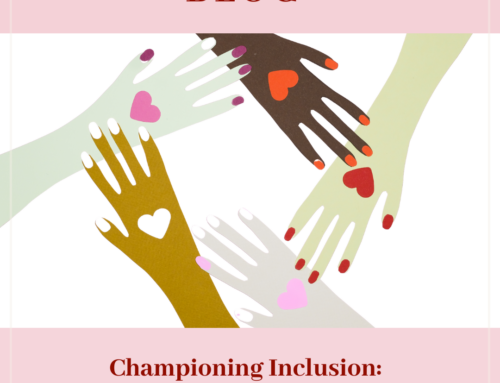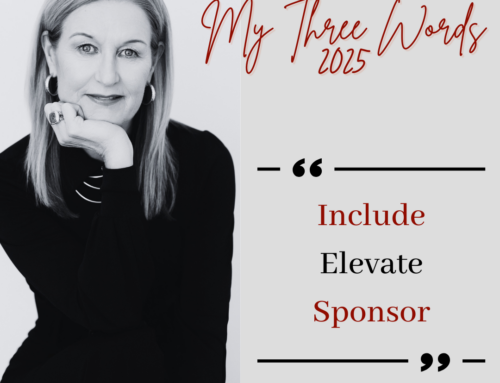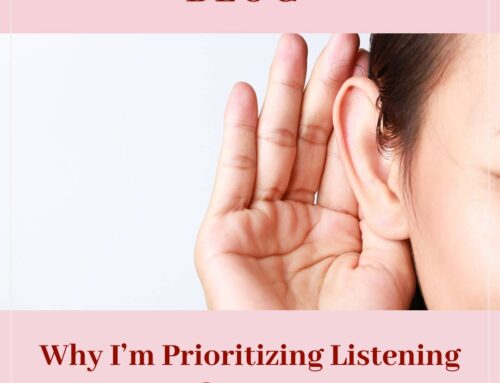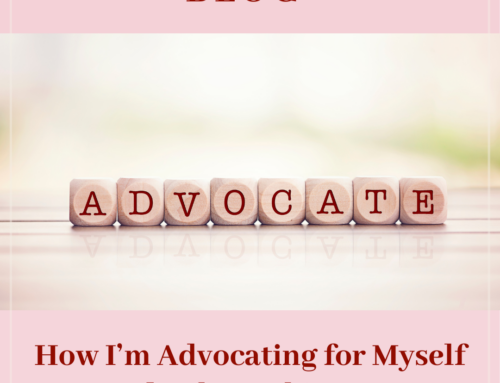How choosing “innovate” as one of the #my3words for 2023 has led to some of my career’s most rewarding opportunities
As I shared in my previous post, I’ve chosen three guiding words to focus me in 2023: elevate, innovate and sustain. This yearly list of #my3words helps remind me daily of what I’m committed to focusing on.
The word innovate has been a guiding principle for me for as long as I can remember. It’s in my DNA—even as a child, I always looked for ways to do things differently and better. I had to find creative ways, for example, to rapidly teach myself French so I could catch up to my grade-seven Toronto classmates (having fallen well behind when my family lived in the States for a few years) or how to get my fourteen-year-old self to my 6 a.m. shifts at McDonald’s without waking my parents up for a ride. Whatever problem I faced, large or small, it was always in my nature to look beyond the obvious to solve them.
Innovation, of course, is critical to business growth. It’s how businesses and individuals stay competitive, meet evolving customer needs, and improve efficiency and effectiveness. I wouldn’t be the business leader I am today if I didn’t have the creativity, outside-the-box approach, and change orientation that comes with an innovative mindset. Above all, I strive to use innovation to bring about positive change.
Throughout my career, I have been defined in three interconnected ways: corporate governance champion, community builder, and catalyst for change. And in every one of those dimensions, I am constantly innovating. It’s just who I am.
Bringing an Innovative Mindset to My Corporate Governance Work
I gravitate to people and companies doing innovative things in my board work. For example, I’ve recently been appointed chair of the inaugural board of Profound Impact, a company I was attracted to precisely because of its innovative approach. A leader in AI-powered solutions, Profound Impact has built an optimization platform called Research Impact, which matches research grants with academic and industry researchers. The opportunity to work with an all-female board and an entrepreneurial female founder makes this an extremely exciting venture for me—I’m working with like-minded, innovative women to help drive the company to new growth levels while positively impacting the research world.
I’ve also been a corporate director for publicly listed companies in emerging industries like cannabis (MedReleaf, Lift & Co and Khiron Life Sciences) and tech (TAAL Distributed Information Technologies, NextJ Systems). This has been a trend throughout my career—I was CFO of an early-stage tech company over two decades ago (TimeStep Corporation) and then a partner in a Venture Capital firm (Celtic House Venture Partners). Emerging technology companies and industries like cannabis need good governance just as much as established industries. Some people might shy away from working with early-stage companies or serving on their boards, thinking it’s too risky, but an innovative mindset is precisely what these companies need, so it’s always been a perfect fit for me.
Innovating to Build Community
I founded my own social purpose company, Women Get On Board (WGOB), another example of my innovative mindset. I was getting requests from many women asking me how to get on a board, and I would speak at women’s leadership conferences on the topic, but it became clear that while there were governance certification programs to educate women on how to be influential board members, there wasn’t a community-based platform to help amplify their voices.
I knew I had a network and experience as a leading and serving corporate director that could elevate these women directly. So I decided to take action, and I set out to do something innovative—in 2015, I founded a member-based, social-purpose company to create the next generation of women corporate directors, bringing them together in a community to share ideas and promote each other and ultimately helping them secure the board positions they deserve. That didn’t exist before.
It didn’t faze me that there was no precedent for it—quite the opposite. What excites me most in business is white space: an opportunity to fill a gap, where either nobody’s doing something a certain way, or nobody’s doing it at all, and then figuring out what’s needed to fill the space. I’m always thinking of how we might partner with someone, use new technology, or expand to new regions or programs, to further our mission. If you have a strong purpose, you can look at each innovative idea and ask whether your goals are being served.
One of our most successful innovations at Women Get On Board is our WGOB Mentorship Program. In addition to being matched with a mentor for one-on-one learning and connection, mentees go through a structured education program on key learnings about getting on boards, and they also come together as a cohort to make connections and learn from one another, peer-to-peer. We’ve had thirty-one mentees go through the WGOB Mentorship Program, and another seventeen are now in the third cohort. Again and again, we hear from participants how much they value these added dimensions of the program. Here’s what one participant (Barbara Boyd, a corporate director) had to say:
“I am privileged to be a part of Women Get on Board and their WGOB Mentorship Program, which helped lead me to my new board role. The coaching from such fabulous inspirational women has been instrumental in accelerating my board readiness and confidence.”
I’ve also helped create two similarly impactful programs at my alma mater, Brock University—the Deborah Rosati Women in Leadership Mentorship Program and the Deborah E. Rosati Entrepreneurship Program. I love to build programs to fill gaps that I see, to help connect people and develop communities in new and exciting ways.
We Need Innovative Ideas to Bring about Change
At WGOB, we are working to catalyze change, one board at a time—it’s why we exist. In 2022, according to Osler’s 2022 Diversity Disclosure Practices report, out of all the companies listed on the TSX, only 7.4% had female chairs; the year before, that number was 6.6%. Seeing that slight shift upward is nice, but considering how many talented women there are, I’m determined to keep increasing that number.
To drive change, it’s essential to remain open to market demand. Last year one of our members, who was chair of a board, shared candidly with me that she didn’t have anyone to talk to about her board work—essentially, she was finding it lonely at the top. I seized that opportunity and created the WGOB Chairs Forum for female board chairs. We brought eleven women chairs together in our initial cohort, all chairs or vice chairs of various boards. We now facilitate a quarterly discussion to provide a community to connect, promote and empower women chairs to excel in their boardroom leadership. It’s a unique and safe space for women to share their experiences. We talk about issues unique to women chairs, such as the biases some face. As you’d expect in a group of women, there’s no jockeying, no ego, no judgement—just relief to share experiences with peers rather than experience them alone. This impactful idea is helping to drive change among the community of female board chairs, making them more open and collaborative, which elevates them individually and collectively. It’s been very successful—and our next WGOB Chairs Forum cohort starts this October.
Another idea I had to ensure we were taking tangible actions to advance more women on boards was to leverage our community of board-ready women into a WGOB board shortlist service. Boards want to diversify their board composition, and we have a highly talented community of women corporate directors¼ it’s a perfect fit. Best of all, I’ve been in board members’ shoes because I’ve chaired and served on corporate governance & nominating committees, so I can understand what they are looking for in their board renewal process.
Today a board can come to us and get a high-quality shortlist list of women who fit their criteria. I am proud of our work over the last few years: we have been engaged by over two dozen companies in diverse industries, and over 50% of them have chosen at least two of the women board candidates we have curated for them.
Innovating Every Day
I discuss a board member’s role involving four lines of sight: oversight, hindsight, foresight, and insight. A lot of board members are excellent at oversight and hindsight. We need to spend much more time on foresight and insight—looking at and analyzing trends and anticipating the future. That’s where an innovative mindset becomes essential and a strategic asset to a board member.
To me, innovation isn’t something I set out to do—it has always come naturally. I know that’s not the case for everyone, but I believe it’s something you can cultivate.
My best advice is to find ways to be innovative every day. You don’t have to try to change the world—look at what you might do differently. Where could you introduce something that would make you work more productively, bring efficiency to a process, or test the waters in a new area?
One of your ideas may change lives or significantly impact the world. You’ll never know unless you try.





Leave A Comment